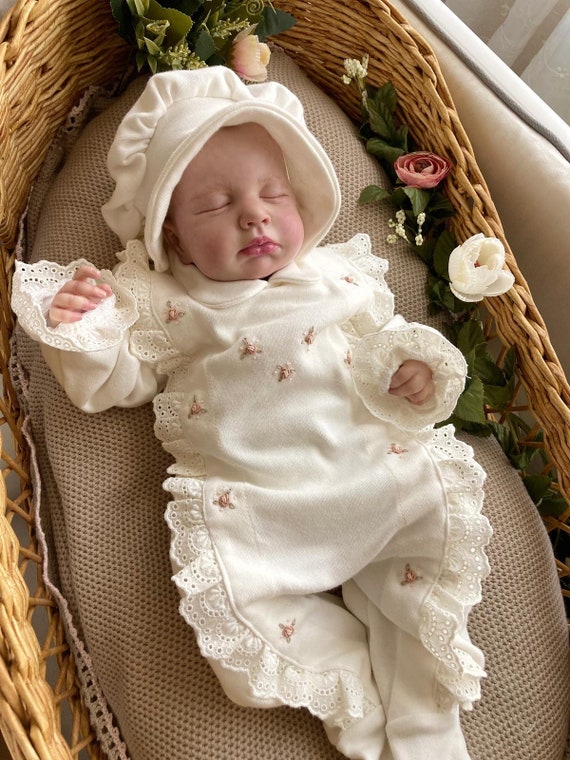
Newborn Baby Clothes: A Comprehensive Guide for Parents
Introduction
The arrival of a newborn baby is a momentous occasion, filled with joy, excitement, and a myriad of responsibilities. Among the essential preparations for your little one’s arrival is selecting the right clothing. Newborn babies have delicate skin and unique needs, making it crucial to choose clothes that are comfortable, safe, and practical. This comprehensive guide will provide you with all the information you need to make informed decisions about newborn baby clothes.
Essential Clothing Items
The following items form the core of a newborn baby’s wardrobe:
- Onesies: These one-piece garments are essential for layering and easy diaper changes. Choose onesies made from soft, breathable fabrics like cotton or bamboo.
- Bodysuits: Similar to onesies, bodysuits provide full coverage and snap closures for quick dressing. They are available in various styles, including long-sleeved, short-sleeved, and sleeveless options.
- Sleepers: Designed for nighttime comfort, sleepers are one-piece garments that cover the baby’s feet and have snap closures for easy diaper changes.
- Swaddles: Swaddles help create a cozy and secure environment for newborns, mimicking the feeling of being held. Choose swaddles made from breathable fabrics like muslin or cotton.
- Hats: Newborns lose heat quickly through their heads, so hats are essential for keeping them warm. Opt for hats made from soft, breathable materials like cotton or fleece.
- Mittens: Mittens prevent newborns from scratching themselves with their sharp nails. Choose mittens made from soft, breathable fabrics like cotton or bamboo.
- Socks: Socks keep newborns’ feet warm and protected. Choose socks made from soft, breathable fabrics like cotton or wool.
Choosing the Right Size
Newborn babies come in a wide range of sizes, so it’s important to choose clothes that fit properly. Here are some guidelines:
- Preemie: Premature babies typically wear clothes labeled "preemie" or "newborn preemie."
- Newborn: Most newborns wear clothes labeled "newborn" or "0-3 months."
- 0-3 months: This size range is suitable for babies up to 3 months old.
- 3-6 months: This size range is suitable for babies between 3 and 6 months old.
Materials and Fabrics
The materials and fabrics used in newborn baby clothes play a crucial role in their comfort and safety. Here are some key considerations:
- Cotton: Cotton is a natural fiber that is soft, breathable, and hypoallergenic, making it an excellent choice for newborn clothes.
- Bamboo: Bamboo fabric is similar to cotton in terms of softness and breathability, but it is also moisture-wicking and antibacterial.
- Fleece: Fleece is a synthetic fabric that is soft, warm, and cozy, making it ideal for winter clothing.
- Wool: Wool is a natural fiber that is warm, breathable, and moisture-wicking. It is a good choice for winter clothing, but it can be itchy for some babies.
- Silk: Silk is a luxurious natural fiber that is soft, breathable, and hypoallergenic. It is a good choice for special occasions or warm weather.
Safety Considerations
When choosing newborn baby clothes, safety should be a top priority. Here are some important safety tips:
- Avoid loose clothing: Loose clothing can pose a strangulation hazard. Choose clothes that fit snugly but not too tightly.
- Check for drawstrings: Drawstrings can also pose a strangulation hazard. Avoid clothes with drawstrings or remove them before dressing your baby.
- Choose flame-resistant fabrics: Flame-resistant fabrics are less likely to catch fire and burn. Look for clothes labeled "flame-resistant" or "FR."
- Avoid rough or scratchy materials: Rough or scratchy materials can irritate your baby’s delicate skin. Choose clothes made from soft, smooth fabrics.
- Wash new clothes before wearing: New clothes may contain chemicals or dyes that can irritate your baby’s skin. Wash all new clothes before dressing your baby.
Practical Considerations
In addition to safety and comfort, there are also some practical considerations to keep in mind when choosing newborn baby clothes:
- Ease of dressing: Choose clothes that are easy to put on and take off, especially for diaper changes.
- Ease of cleaning: Newborns can be messy, so choose clothes that are easy to clean and stain-resistant.
- Durability: Newborn clothes will get a lot of wear and tear, so choose clothes that are durable and can withstand multiple washes.
- Cost: Newborn clothes can be expensive, so set a budget and stick to it. There are many affordable options available without sacrificing quality.
Special Occasion Clothing
While comfort and practicality are essential for everyday wear, there may be occasions when you want to dress your baby in something special. Here are some tips for choosing special occasion clothing:
- Consider the occasion: The type of special occasion will dictate the appropriate attire. For formal events, opt for dressier outfits, while for casual events, more relaxed clothing is suitable.
- Choose breathable fabrics: Even for special occasions, comfort is still important. Choose fabrics that are breathable and won’t irritate your baby’s skin.
- Accessorize wisely: Accessories can add a touch of style to special occasion outfits. Choose accessories that are safe for newborns, such as soft headbands or tiny socks.
Conclusion
Choosing the right newborn baby clothes is an important part of preparing for your little one’s arrival. By following the guidelines and tips outlined in this comprehensive guide, you can ensure that your baby is comfortable, safe, and stylish. Remember to prioritize safety, comfort, and practicality, and don’t be afraid to ask for help from friends, family, or a healthcare professional if you have any questions or concerns. With the right clothing, your newborn baby will be ready to embark on the exciting journey of life.
